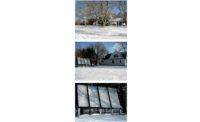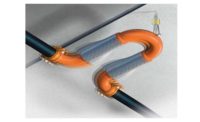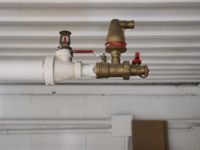Harnessing the power of electricity arguably is one of the greatest feats of mankind. As the technology for storing this energy advances, the associated fire hazards increase as well.
Before looking at possible suppression systems for a battery ESS, it is important to understand what an ESS is, what it is used for and what are the possible fire hazards.
NFPA 70: The National Electrical Code defines an ESS as “one or more components assembled together capable of storing energy for use at a future time…” This definition is extremely broad and can be applied to many different systems, but for the interest of this article we will focus on electrochemical, or battery, ESSs and more specifically, lithium-ion-type battery ESSs.
Lithium-ion batteries are abundant in modern consumer products such as laptops, cell phones and electric vehicles. They are widely used because of their high-energy density and relatively low cost. With the continued reduction in cost of lithium-ion batteries, the energy storage sector is expected to see large growth in the upcoming years.
ESSs can be used in a wide variety of applications. As a consumer, you most likely would see an ESS installed in your home to enhance the cost-effectiveness of rooftop solar panels or wind turbines. The way ESS works with renewable energy such as wind and solar power is the batteries can store any excess power generated for use at a later time. Without an installed ESS, if you do not use the energy generated by your solar panels or wind turbine then you would sell the power back to the energy company, only to buy it back later at a higher price.
ESS also can be used in a concept called peak shaving. Since energy prices fluctuate throughout the day, this strategy essentially is charging your ESS when the demand, and therefore cost, of energy is low and then using that energy when the demand and price is high. This will save money by allowing you to use low-cost energy all day. ESS also can be used as backup power and load leveling of the local electrical grid.
There are several hazards associated with ESSs. You may be aware of the stories of laptop, cell phone and hoverboard lithium-ion batteries catching fire. ESSs are much larger than these typical consumer products and can contain tens of thousands of battery cells. One of the major concerns is when something goes wrong with a lithium-ion battery it is subject to discharging flammable and toxic gasses and generating a lot of heat. Batteries typically are encased in plastics as well which adds to the fire load. A lithium-ion battery fire can be caused by mechanical abuse (crushed, punctured, submerged), thermal abuse (overheating) or electrical abuse (short-circuit, overcharge, rapid discharge).
Fire suppression options
I would like to preface this section by acknowledging there are still many unknowns in regard to effective fire suppression and little publicly available data on large-scale ESS burn testing. The industry is aware of this knowledge gap and testing is being coordinated to further our understanding of how suppression systems interact with a fully involved ESS fire. The following information is based on existing research, testing and an understanding of suppression systems.
Automatic sprinkler system: It is important to understand the lithium found in these batteries is not pure lithium. Lithium is a flammable metal and highly reactive with water, therefore if this was a lithium metal fire, you would want to use a Class D-rated fire extinguisher and not water. However, a recent NFPA Fire Protection Research Foundation report confirms the lithium inside these batteries is lithium salts and it is safe to use water as an extinguishing agent.
Water has been the best method for extinguishing fires for thousands of years because of its effectiveness, availability and low cost. Electronics, such as lithium-ion batteries, are not compatible with water since water is thermally conductive and can cause short-circuiting. In the event of a fire where a sprinkler system is activated, there is the risk of damaging the surrounding batteries that are not involved in the fire and substantial cleanup will be required. Water is great at extracting heat from a battery but often times these batteries are located on shelves, on racks and inside cabinets, which can make it difficult for a sprinkler system to apply water directly to the battery itself. Testing has shown water and sprinkler systems are effective at extinguishing a lithium battery fire. Additional testing is still needed to determine the appropriate water application rate for an ESS.
Inert gaseous system: Inert gaseous fire-suppression systems work by both depleting oxygen in the room and extracting heat from the fire. They are electrically nonconductive and leave no residue to clean up. This system can be used in a local application where the gaseous discharge is directly applied to a specific location or in a total flooding application where the agent is discharged and fills a whole container or room.
This is a very effective way for extinguishing an incipient fire within an ESS enclosure. If a non-battery component of the ESS is involved in a fire, this method has the potential to put that fire out without causing water damage to the adjacent equipment and there is no need for water damage cleanup. The problem with this fire suppression system type is testing has shown gaseous suppression systems do not have the ability to cool a fully involved battery fire below its auto-ignition temperature. While gaseous suppression systems can suppress flaming combustion, it does not reduce the rate of flammable gas discharging from the battery. This could allow the room to develop an explosive environment.
Water-spray systems: This has many of the benefits of a sprinkler system but has the added benefit of being able to direct the flow in a specific direction. This could help overcome the difficulty in getting water directly to the battery itself instead of applying the water to the outside of a battery cabinet.
Foam system: A foam fire-extinguishing system typically is used in a flammable liquids fire where the flammable liquid is more buoyant than water. A foam system helps smother the fire by forming a layer of foam on top of the flammable liquid. This extinguishing system would not be effective against a lithium-ion battery ESS. This would most likely damage additional batteries, not extinguish the fire and require additional cleanup.
Water-mist system: The consideration of a water-mist fire-suppression system for protecting a lithium-ion battery ESS is very plausible. Due to the small particle size and higher surface area, this allows for better heat absorption than a typical sprinkler system and therefore would require less water. This would be useful in places where access to water is limited. Water-mist systems also have the potential to be nonconductive so it would not damage adjacent electronics and would require little cleanup. I am not aware of any testing that has been done to determine the effectiveness or to quantify the water-mist application rate to effectively cool a lithium-ion ESS.
There are still a lot of unknowns when it comes to exactly how each fire-suppression system will interact with an ESS fire. With so many technologies out there for fire suppression, the options can seem overwhelming.
Continued research, testing and experience in the field will help shape the future of how ESS are protected. How these systems interact with the fire-detection and passive-fire-protection features also plays a critical role in protecting ESSs. A recent report from Con Edison and DNVGl recommends a two-staged approach to extinguishment of ESSs.
The first stage is comprised of a gaseous extinguishing system to extinguish any incipient fires early on before they can turn into a fully involved fire. In the event the internal temperature continues to rise, forced ventilation and a water-based suppression system is recommended as the second stage.
This article appeared in the Fire Protection & Design Special Section of the May 2018 print edition of PM Engineer.



